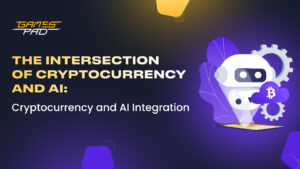Cryptocurrencies and Blockchain: A Comprehensive Overview
In recent years, the terms “cryptocurrency” and “blockchain” have surged into the mainstream consciousness, often seen in headlines, news reports, and discussions around digital finance and technology. Although frequently mentioned together, these concepts represent distinct elements of a rapidly evolving digital ecosystem. This article delves into the intricacies of cryptocurrencies and blockchain technology, their interplay, and their potential impacts on various sectors.
Understanding Blockchain Technology

At its core, blockchain technology is a decentralized digital ledger that records transactions across multiple computers so that the record cannot be altered retroactively. It was first conceptualized in 2008 by an individual or group of individuals using the pseudonym Satoshi Nakamoto as the underlying technology for Bitcoin. However, its potential applications extend far beyond cryptocurrencies.
1. Structure and Functionality
A blockchain is composed of a series of blocks, each containing a list of transactions. Each block is linked to the previous one through cryptographic hashes, forming a chain. This linkage ensures the integrity and security of the data, as altering any block would require changing all subsequent blocks, which is computationally infeasible.
2. Decentralization and Security
One of the key features of blockchain is its decentralized nature. Instead of relying on a central authority or server, the blockchain is distributed across a network of nodes. Each node maintains a copy of the entire blockchain, ensuring that no single entity has control over the entire system. This decentralization makes the blockchain resistant to censorship and tampering, enhancing its security.
3. Consensus Mechanisms
To validate transactions and add new blocks to the blockchain, consensus mechanisms are employed. The most common mechanisms are Proof of Work (PoW) and Proof of Stake (PoS). PoW, used by Bitcoin, requires miners to solve complex mathematical problems, while PoS involves validators staking their cryptocurrency to participate in the consensus process. Both mechanisms aim to ensure that only valid transactions are recorded on the blockchain.
Cryptocurrencies: Digital Assets on the Blockchain

Cryptocurrencies are digital or virtual currencies that use cryptography for security and operate on blockchain technology. Bitcoin, introduced in 2009, was the first cryptocurrency, but thousands of others have since emerged, each with unique features and use cases.
1. Bitcoin and Altcoins
Bitcoin, often referred to as digital gold, was designed as a decentralized alternative to traditional currencies and a store of value. It operates on its own blockchain and uses PoW to secure transactions. Bitcoin’s limited supply—capped at 21 million coins—adds to its appeal as a deflationary asset.
Altcoins, or alternative cryptocurrencies, include a wide range of digital assets other than Bitcoin. Examples include Ethereum, which introduced the concept of smart contracts, and Ripple (XRP), known for its focus on facilitating cross-border payments. Each altcoin may offer different functionalities, from enhanced privacy features to faster transaction speeds.
2. Use Cases and Applications
Cryptocurrencies have various applications beyond serving as a medium of exchange. For instance:
– Smart Contracts: Enabled by platforms like Ethereum, smart contracts are self-executing contracts with the terms written into code. They automatically enforce and execute agreements based on predefined conditions, reducing the need for intermediaries.
– Decentralized Finance (DeFi): DeFi refers to a suite of financial applications built on blockchain technology. It aims to recreate traditional financial services—such as lending, borrowing, and trading—without intermediaries, using smart contracts and decentralized protocols.
– Non-Fungible Tokens (NFTs): NFTs are unique digital assets that represent ownership of specific items or content, such as art, collectibles, or virtual real estate. Unlike cryptocurrencies, which are fungible and interchangeable, NFTs are distinct and cannot be exchanged on a one-to-one basis.
3. Volatility and Investment Risks
Cryptocurrencies are known for their volatility. Prices can fluctuate wildly based on market sentiment, regulatory news, and technological developments. While this volatility can present opportunities for investors, it also poses significant risks. Investors should conduct thorough research and consider their risk tolerance before investing in cryptocurrencies.
The Intersection of Cryptocurrencies and Blockchain

Cryptocurrencies are a prime application of blockchain technology, leveraging its decentralized and secure nature to operate without intermediaries. However, blockchain’s utility extends far beyond the realm of digital currencies.
1. Beyond Cryptocurrencies
Blockchain technology is being explored for various applications outside of cryptocurrencies. For instance:
– Supply Chain Management: Blockchain can enhance transparency and traceability in supply chains by recording every transaction and movement of goods on an immutable ledger. This can help reduce fraud, counterfeiting, and inefficiencies.
– Healthcare: In healthcare, blockchain can securely store and share patient data, ensuring that medical records are accurate and accessible only to authorized individuals. It can also streamline clinical trials and pharmaceutical supply chains.
– Voting Systems: Blockchain-based voting systems can provide a secure and transparent way to conduct elections, reducing the risk of fraud and ensuring the integrity of the voting process.
2. Regulatory and Legal Considerations
As cryptocurrencies and blockchain technology continue to evolve, regulatory and legal frameworks are also developing. Governments and regulatory bodies are grappling with how to address issues such as financial stability, consumer protection, and anti-money laundering.
Some countries have embraced cryptocurrencies and blockchain, creating favorable regulatory environments. Others have imposed restrictions or outright bans, citing concerns about financial stability and illicit activities. The regulatory landscape remains dynamic, and ongoing developments will shape the future of these technologies.
The Future of Cryptocurrencies and Blockchain

The future of cryptocurrencies and blockchain technology is promising but uncertain. As adoption grows, we can expect continued innovation and integration across various sectors. Key trends to watch include:
– Interoperability: Efforts to create interoperable blockchain networks will facilitate seamless interactions between different blockchain systems, enhancing their utility and efficiency.
– Scalability: Solutions to improve blockchain scalability, such as layer 2 protocols and sharing, will address current limitations and enable larger-scale applications.
– Integration with Traditional Finance: The integration of cryptocurrencies and blockchain with traditional financial systems could lead to more efficient and inclusive financial services.
In conclusion, cryptocurrencies and blockchain technology represent a transformative shift in how we think about money, transactions, and data management. While they offer significant potential benefits, they also come with challenges and risks that must be navigated carefully. As these technologies continue to evolve, they hold the promise of reshaping various aspects of our digital and financial lives.
